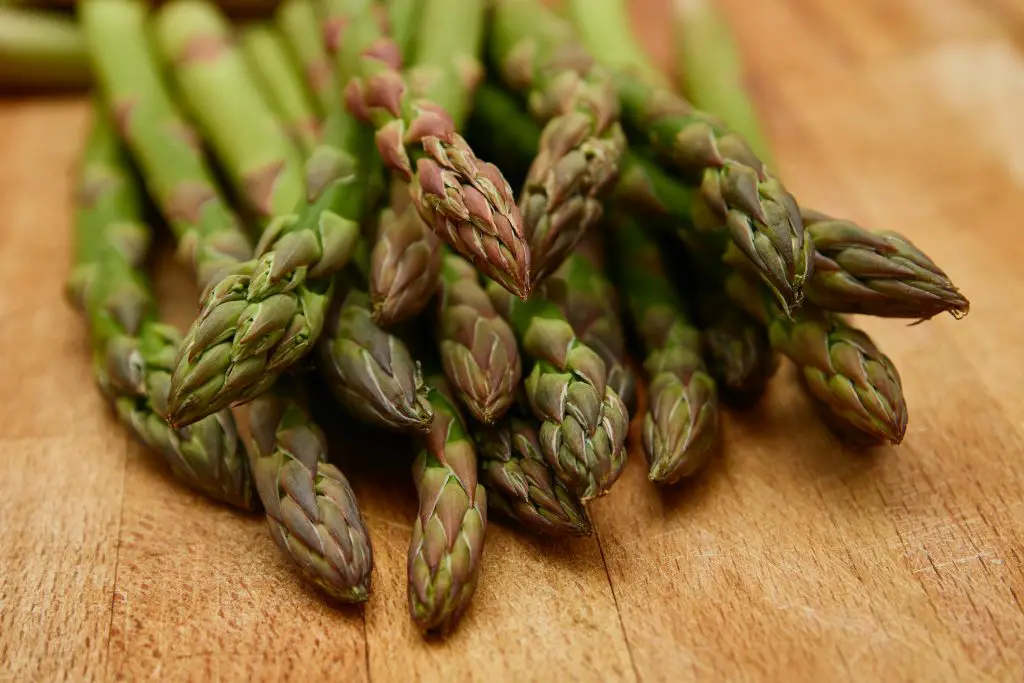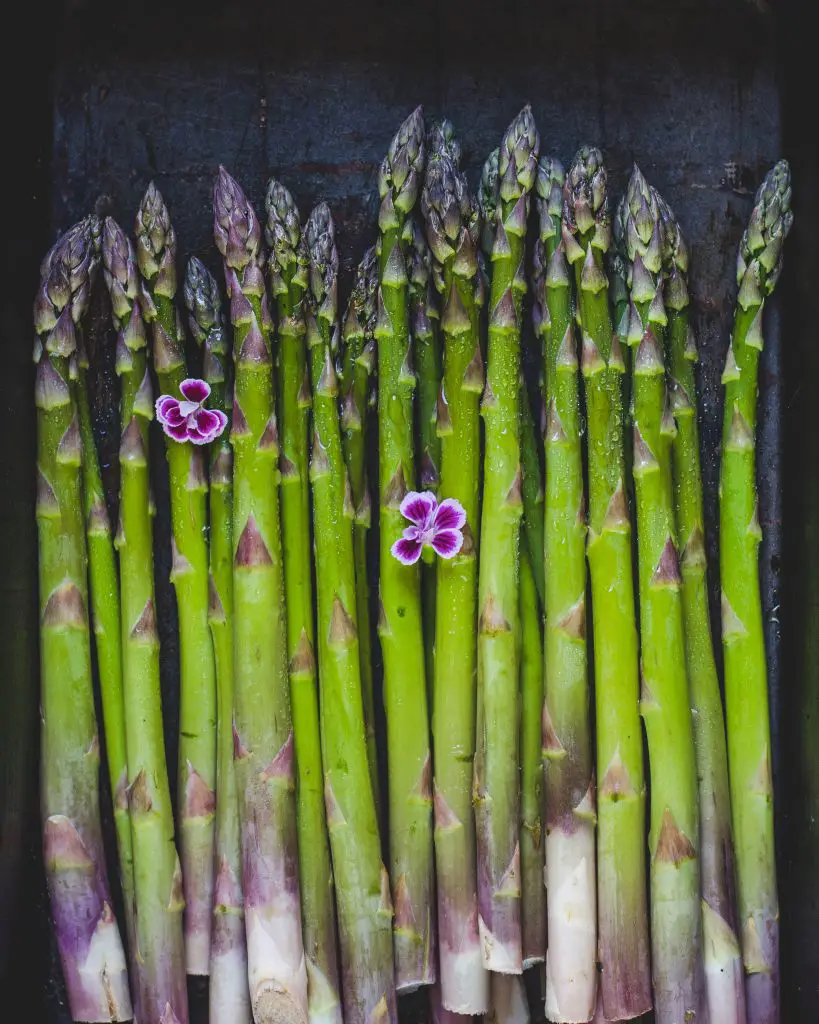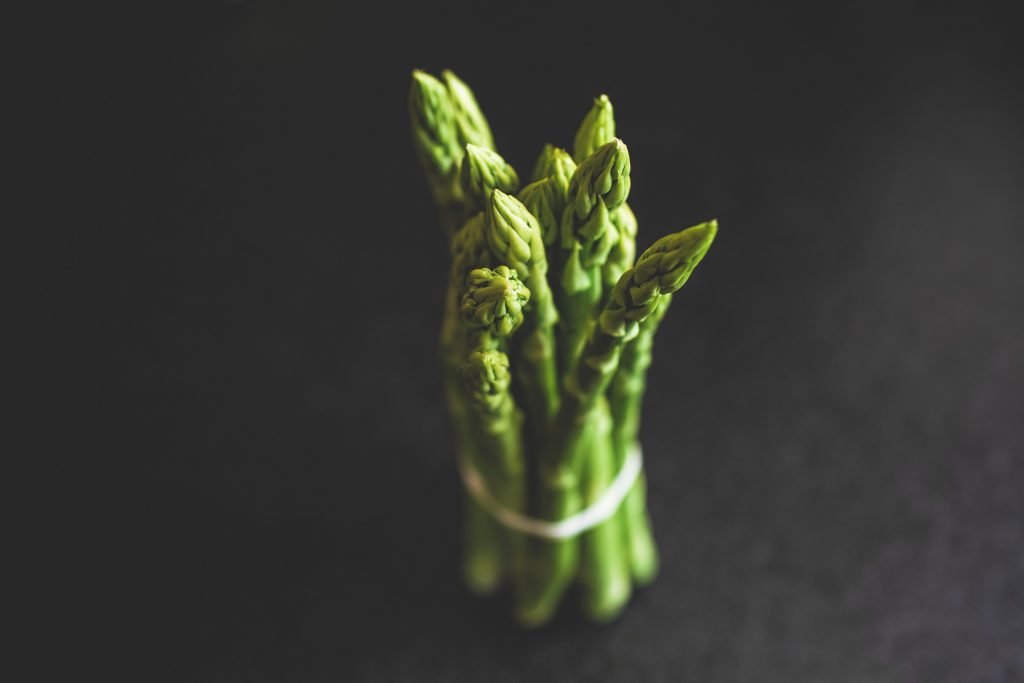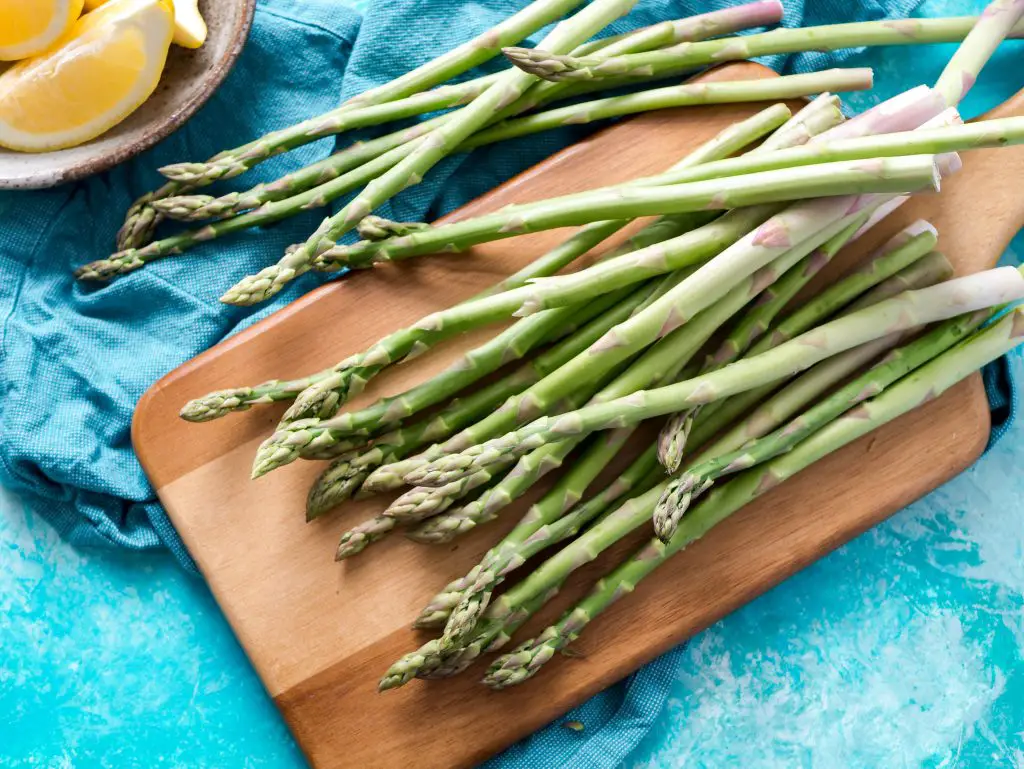How Long Does It Take To Grow Asparagus From Seed? Asparagus is a hardy perennial plant, that will tolerate temperatures as low as -6°C (20°F), for short periods. To establish plants, many people purchase crowns from the local garden centre, which is a relatively expensive way to purchase plants, as a single crown costs around $10.
It is much more cost-effective to buy them online, they are available from Seeds Now in the US and yougarden.com in the UK for around one-fifth of the price. The other disadvantage of crowns is the number of varieties available, which is quite limited though Thompson & Morgan have a relatively wide range compared to most product offerings.
The alternative to buying crowns is to establish plants from seed, which is significantly cheaper. When establishing plants, it takes approximately 4 years to produce the first harvest, versus using crowns, which takes approximately 3 Years. This is supported by a study from Iowa State University, which stated that;
“A comparison of 1, 2 & 3 Year old Asparagus plants was made. The 3 Year old plants produced a poor quality of spears. There was little difference between the 1 and 2 Year old plants” (E. S. Haber, 1935)

Given that several crowns are required to produce a decent crop, and purchasing a crown only advances the harvest by one season, seeds are the way to go.
To learn more about the specific varieties try visiting our vegetable database which has over 1000 varieties in it in a searchable format allowing you to find just the right variety.
How Much Asparagus To Plant?
When deciding how much Asparagus to grow, it depends on how often you plan to enjoy the vegetable, and how much garden space you have available. To give you an idea of yield per plant, you can expect around 250 grams (0.5 lb), in the first year of harvest, this should increase to around 500 grams (1 lb), over the next 2-3 seasons as the plant matures.
The harvest is typically taken between early Spring and at the start of Summer, which is an advantage because it occurs at a time when there are not that many other vegetables ready to harvest. Typically, 2-5 spears from each plant, may be harvested, twice a week, so having 10-20 plants should provide enough spears to produce a meal on a regular basis.
The ideal spacing of the plant, according to Iowa State University, is around 60cms (2ft) apart, in rows that are 150cm (5 ft) wide, to access the spears stating;
“Plants spaced 1 foot apart in the row produce smaller spears than those spaced at 2 and 3 feet. Either 2 or 3 foot spacing is satisfactory as far as size of spear and total yield are concerned. Rows spaced 5 feet apart produced more spears and more total weight than the lesser distances”.
As such, around 12 sqm (130 sqft) of space is required in the garden, to provide meals for a family of 4-5 people.

How To Grow Asparagus
When planting from seed, it is best to sow the plants in Spring or Summer, in modular trays. Sow the seed at a depth of 1-2cm (0.5 inches), and water well. The seedling will take 6-8 weeks, before it is large enough to plant in the garden. At this stage, the seedlings will typically have reached a height of 10-12 cms (4-5 inches). It is best to plant seedlings out in the garden, when temperature is greater than 5°C (41°F).
Asparagus prefer a location in full sun, that has rich soil with plenty of organic matter, that is moist, but well drained. The ideal pH of the soil is about 6.5 to 7, like most vegetables. To learn more about how to test pH and adjust it, go to https://planyourpatch.com/why-is-ph-important-in-soil/.
Water the plant regularly in the early stages, and ensure that the seedlings are protected from slugs and snails, as they are susceptible to attack in the early stages of growth.
Once established, the seedlings will begin to develop crowns over the next growing season, before becoming dormant in Winter. At this stage, the plants can be dug up and divided into individual plants. Discard any crowns that are too small, or have been damaged in the dividing process, and then replant them into the garden bed. At this stage, it is recommended that a 5cm (2 inch) layer of compost be added to the surface, to serve as a mulch and feed the soil.

In the next 2-3 Years, the Asparagus crowns will begin to produce very thin spears in Spring, that should not be picked, as it will inhibit the development of the crowns. This will be followed by the production of foliage through the Summer months, that will get progressively larger each year. A mature Asparagus will produce foliage that is 2m (6-7ft) high, which will die back in late Autumn. This foliage should be cut back to the ground in Winter, ready for the new Spring growth.
In the first harvest, which usually occurs in the 4th Year after planting seed (3rd Year, when grown from crowns), the harvest will be relative modest. However, once the plants become more robust in subsequent years, you can harvest more heavily. If you notice a decline in robustness after several years, you may want to divide and transplant your Asparagus. Asparagus will continue to produce, for about 15-20 Years.
How to Harvest Asparagus
As the Asparagus spears appear in Spring, it is best to harvest them when they are 6 to 10 inches tall, but prior to the flower buds opening. They can be snapped off at ground level, or cut with an Asparagus knife which, is designed specifically for the job. The knife cuts the spear below the ground level, optimising the length of the spear, and allowing the most tender part of the spear to be harvested. The harvest period lasts 6 to 8 weeks, but should not be continued, later than mid June, as it will have a long term detrimental effect on the crown

A study released by Iowa State University (Haber, 1935), compared the impact of concluding the harvesting of spears at different dates on the commercial viability of the crop. There comments were as follows;
- Cutting Asparagus until July 15th each year, materially shortened the profitable life of the planting. The quality of the spears, as indicated by weight and diameter, was so poor as to render the planting unprofitable after 5 Years of harvesting to this date.
- Cutting until July 1st was profitable for 6 Years, but indications point to a reduction in weight and diameter of spears in the sixth year. The future trend appears to be downward.
- Cutting until June 15th seemed to give the best results over the 6-Year harvest period
If you notice a decreased vigor in your Asparagus plants, cease harvesting. The crowns rely upon the photosynthesis from its foliage, to create an energy store for the following season. Any spears that reach a height of more than 10 inches, should be allowed to continue growing.
How To Storage Asparagus
Asparagus can be stored in a similar manner to cut flowers, for a period of about 1 week. This is best done by trimming the bottoms of the spears, and standing them up in a glass or jar with about 2-3cm in the bottom. Cover the jar with a plastic bag to avoid moisture loss and refrigerate. If the water becomes discoloured or cloudy, change the water.
Relevant Articles
How Big Do Plants Asparagus Get?
12 Tips To Boost Your Garden Output
10 Ways To Make Your Vegetable Garden Look Beautiful
A Step by Step Guide For Starting a Vegetable Patch
